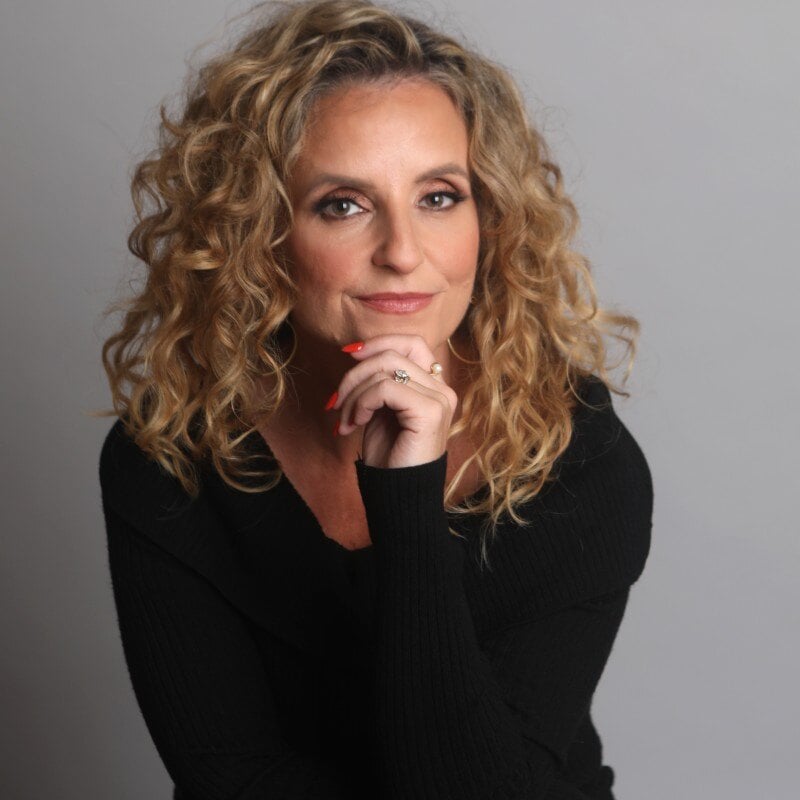What if we did "that" on purpose?

Dacia Coffey
.png)

What if we did "that" on purpose?
The historical approach to branding and marketing is a compartmentalized thing - there’s a clear and firm dividing line between the client and the person making the magic. Pay no attention to the “man behind the curtain,” just pass over your marketing goals and they will get the job done, whether you know about it or not!
We at The Marketing Blender may have been guilty of starting out that way, but it didn’t take long to see the trend: when we worked with clients who welcomed or even initiated a collaborative creative process, getting deeply involved and partnering with us throughout our time together, the outcomes were simply better. The process was richer and more enjoyable for everyone involved, and more insights naturally arose during the process.
Huh, we thought. What if we started doing that on purpose?
We didn’t have a name for what that was, at the time. But we changed how we delivered across the board and stepped into a system of deeper inquiry and cooperation. As one example, we set up prerequisite workshops that were client-facing and highly collaborative, where we walked our clients through every step of our process. As their understanding and buy-in increased, client satisfaction went up. We started offering market plans - mapping all the connections between the many tactics involved in a marketing strategy - and we saw a decrease in instances of clients taking the tools we created for them and immediately breaking them. That focus on the strategic process, rather than a superficial list of tactics isolated from a larger picture, became a part of the culture for our 16-person team.
When I participated in the Process Consulting Training 101 through the Society, something incredible happened. I had a blind spot uncovered. It was one I may not have engaged with for years on my own. For the first time, someone really spelled it out for me: organizational and individual impact can happen at the same time. The typical model of an insulated, coldly professional client relationship had continued to cause me frustration and friction, and the training blew that framework right out of the water. There was exponential value in this new idea - that diving into the topics of leadership, culture, operations, and an individual client’s thoughts and feelings along the journey was essential to the customer experience.
There were a few other concepts from that training that have stayed with me and profoundly impacted my work ever since:
1. Humble inquiry. Oh, this one is so important. Humility is misunderstood by so many people. The reality is that confidence is humility’s twin. Whether you “sell it” that way or not, you are being hired for your brain power, your skillset, your experience, your unique abilities, and you have to cross a trust chasm before anyone will pay you for something intangible. Partnering humble inquiry with your confidence creates so much amazing space in client relationships. It gives you permission to lean into your confidence in a quieter, more comfortable, more real way. You don’t need smoke, mirrors, and posturing to convince your clients to partner with you. A humble question will impart more assurance than any amount of bluster and razzle dazzle. (For more on the concept of humble inquiry, check out Dr. Edgar Schein’s book of the same name.)
2. The focus on process. Beyond the impact an attitude of humble inquiry can have on your client relationships, it is also a far truer method for “finding the answer” than any other I’ve found – because the answer is the process. For all the confidence you may have in your knowledge and experience, in the end you are not selling anyone “your answer.” You are offering them your questions, your methods of exploration. You are inviting them to participate in a journey, with you acting as inquirer and guide. You are acknowledging you don’t hold the solution and assuring them of the value that will come through asking powerful questions in partnership.
3. Lifelong learning. This was a piece of our company history already – constantly striving for a better way. Today, being a learner by nature is a part of our hiring criteria. It’s also what we deliver. “You don’t get to be done with this, EVER,” we tell our clients. “Marketing has no finish line!” Some people may find that exhausting, but we can flip that. It’s in our mission statement: we see it as having a domino effect of positivity. When you implement lifelong learning into how you deliver, this beautiful virtuous cycle occurs. How wonderful is it to remember that there’s always more to do?
And, speaking of lifelong learning. I took my learning from PCT 101 home, digested it, applied it, and implemented it with my team. We stepped into a new way of doing marketing, and tore down that curtain so our clients could see exactly how the magic works. We have been doing that, on purpose, ever since.
 Written by Dacia Coffey
Written by Dacia Coffey
CEO @ The Marketing Blender
This month’s member spotlight falls on Dacia Coffey, Certified Process Consultant and author of Corporate Caffeine. As the CEO of The Marketing Blender, a B2B sales and marketing alignment agency, Dacia helps clients transform their brand, revenue growth, and business development machine. She enthusiastically implements a process consulting approach in all of her work - read on to learn more.
If you'd like to write a blog post for the Society for Process Consulting, please e-mail Lon L. Swartzentruber at lons@designgroupintl.com.
Related Posts

.png?height=175&name=Greater%20Cause%20(3).png)
Withness
/Lon%20L.%20Swartzentruber%20Headshot%20(300x300).png?height=70&name=Lon%20L.%20Swartzentruber%20Headshot%20(300x300).png)


